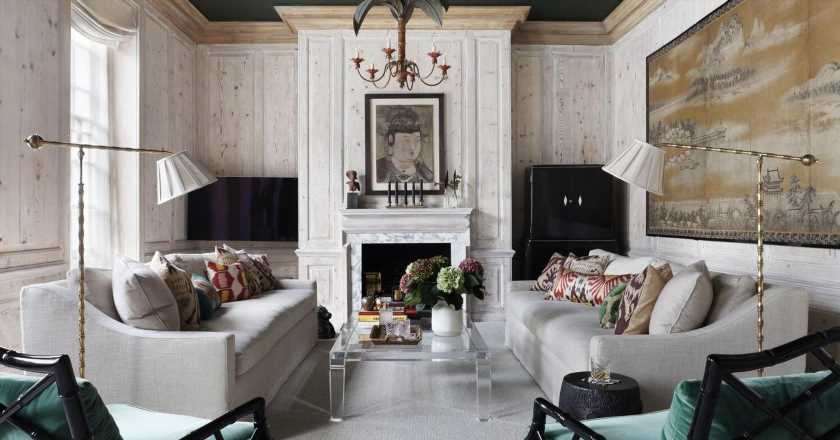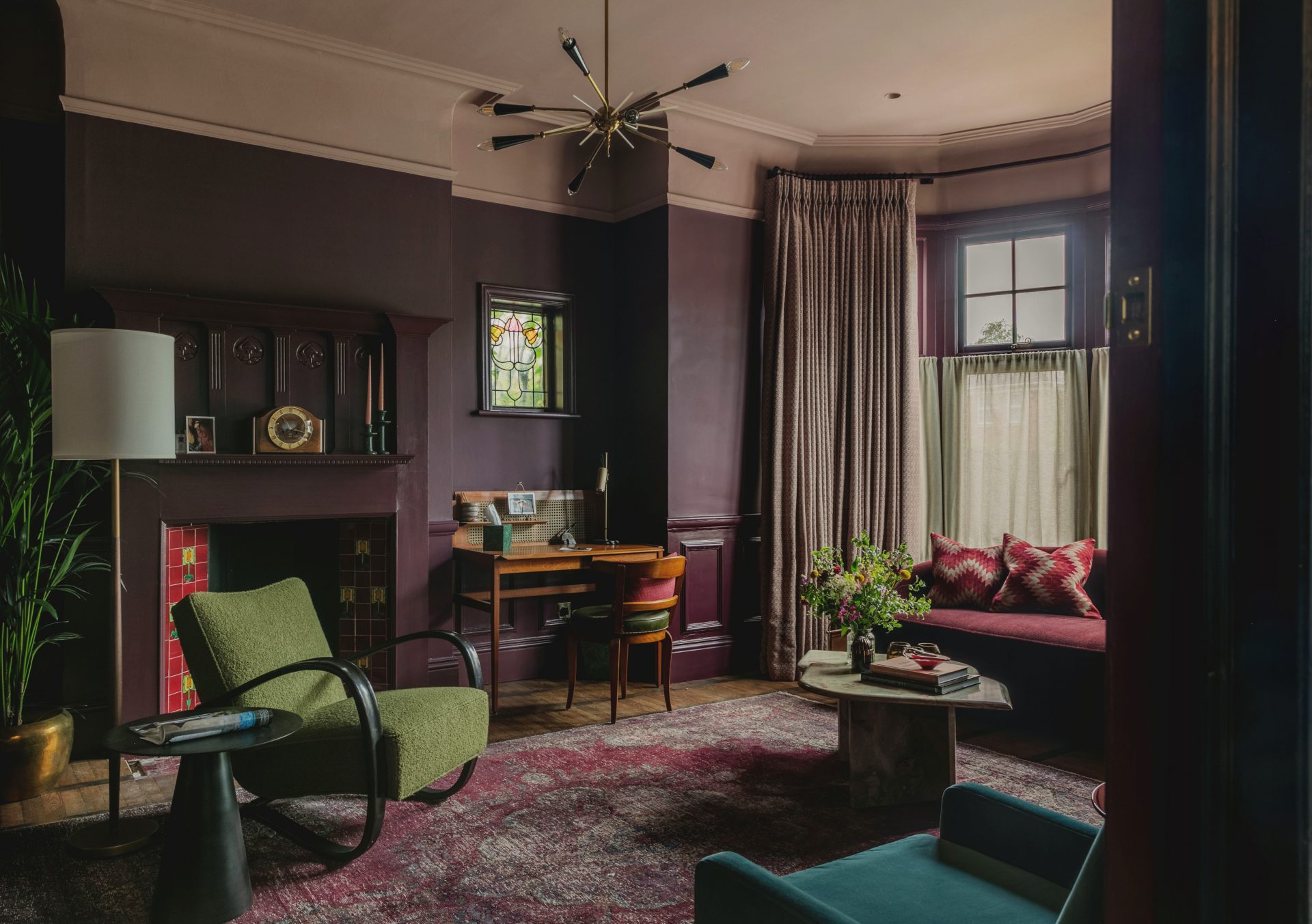
How to try the painted ceiling trend, according to an interior designer
04/29/2021Painted ceilings are going to be an enduring interior design trend throughout 2021. Here, we find out the best techniques and colours to try the look at home from Studio Duggan’s Tiffany Duggan.
Looking at the same four walls since last March may have been difficult at times, but it also seems to have spiked an interiors trend for creative paint designs.
From clashing colour combinations and accent corners, to scallop-edge borders, people have been using this time to make their homes a more visually exciting place.
But while Instagram and Pinterest are brilliant sources of inspiration, we’ve been given a heads-up on one of the biggest paint trends for 2021 from the best in the business, interior designer Tiffany Duggan, founder of Studio Duggan.
Studio Duggan is a revered Notting Hill-based interior design studio, known for its stylish and yet homely use of colour, texture and depth. A quick scroll through the company’s Instagram will serve you the kind of interior inspiration that makes you want to redecorate, immediately.
And not just this, in 2019 Tiffany also developed her own homeware brand Trove, which is brimming with statement headboards, ruffle-edged pillows and selected vintage furniture.
We spoke to Tiffany about how interiors enthusiasts can innovatively use paint and to get the scoop on the trends leading the way in 2021. “At Studio Duggan, we love painted ceilings. We always use them in projects and with clients, but I’m seeing them around more and more,” Tiffany explains to Stylist.co.uk.
“It doesn’t have to be anything really dramatic and bright. My top tip is to simply use a tone that’s lighter or darker than the colour you’re using on the walls, to either make the room feel either airy or nice and cosy.”
When we think of painted ceilings, it’s easy to imagine dramatic designs in striking colours or patterns. But, Tiffany explains that while this can look great, just having a mindful approach to your ceiling and thinking of it as the “fifth wall to decorate” can elevate your interiors game.
“Start by asking yourself what you want the room to feel like and what you’re trying to achieve. Think about how you use this room and how you want your time spent there to feel, because what’s right for one room isn’t right for another,” she says.
For example, if the space is going to be used as a snug then a dark ceiling invokes cosiness, while a lighter ceiling works for an airy space and a patterned or wallpapered ceiling is fun for entertaining.
If you’re looking for a fool-proof way to include your ceiling in your decorating plans, Tiffany recommends taking the traditional approach.
This method is simple and sees the darkest shade on the skirting board, a tone lighter on the walls, a tone lighter on the cornicing and again a tone lighter on the ceiling. This will help the room to feel finished, without too much fuss.
Tiffany also says that other ideas for decorating a ceiling could be opting for “a pale, sky-blue shade which feels fresh or just continuing the colour from the walls to remove the ceiling line. This will make the room feel more spacious.”
Speaking of previous projects that have worked well, Tiffany recalls: “A favourite example of mine is a room that had original wooden-panelled walls which we stained back and lime washed for a lighter effect. Then, we painted the ceiling in a dark green to make the room feel more intimate, otherwise the space could have lacked depth and personality.
So, if you like to think of yourself as a budding interior designer it’s time to get thinking about your ceiling and the effect you want to create with it. As Tiffany says, “It’s an important fifth wall but that doesn’t mean going totally bonkers, it just means being mindful and giving it the same consideration as everything else.”
Main image: Kensington Square photographer Alex James
Image: Flowerlane photographer Mariell Lind Hansen
Source: Read Full Article


